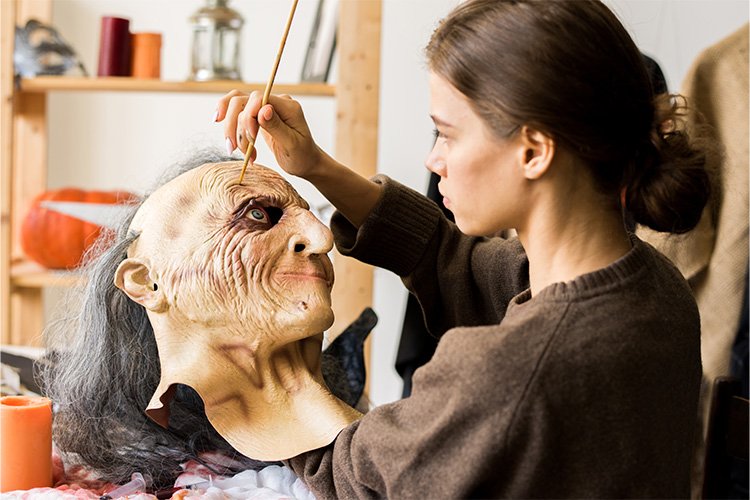In the realm of filmmaking and entertainment, two terms often find themselves in the spotlight: SFX (Special Effects) and VFX (Visual Effects). Both are crucial elements that contribute to the magic of modern cinema, but they serve distinct purposes and involve different techniques. As part of our ongoing exploration of the entertainment industry, brought to you by The Studio Bridge, we delve into the fascinating world of SFX vs. VFX, shedding light on the nuances, applications, and significance of each.
Practical Applications
The first point of comparison between SFX and VFX lies in their practical applications. SFX, or Special Effects, primarily encompasses in-camera effects and physical elements used to create illusions on set. These can include pyrotechnics, animatronics, makeup, prosthetics, and more. SFX are often employed to achieve realistic explosions, gore, practical stunts, and tangible creatures, making them invaluable in action, horror, and fantasy genres.
VFX, on the other hand, refers to Visual Effects, and they are primarily computer-generated or digitally manipulated effects added during post-production. This technology-driven approach allows filmmakers to create anything the mind can conceive, from otherworldly landscapes to mythical creatures, without the constraints of the physical world. VFX is commonly used in science fiction, superhero films, and any project that demands the impossible.
Historical Evolution
Understanding the differences between SFX and VFX requires a brief look into their historical evolution. Special effects have been part of filmmaking since its inception. Early pioneers like Georges Méliès used practical effects to craft imaginative tales, such as “A Trip to the Moon” (1902), where simple tricks like stop-motion and in-camera techniques were employed.
Visual Effects, on the other hand, emerged with the advent of computer technology. The groundbreaking film “Tron” (1982) marked a turning point, showcasing the potential of computer-generated imagery (CGI). Since then, VFX has grown exponentially, pushing the boundaries of what’s possible in cinema.
Collaboration and Integration
One crucial aspect that distinguishes SFX from VFX is the level of collaboration and integration they require. Special Effects often demand close coordination between various departments, including makeup artists, prop masters, and stunt coordinators. The tactile nature of SFX means that these effects are typically achieved on set, requiring seamless teamwork and timing.
Visual Effects, on the contrary, are created and integrated in post-production. VFX artists work with the footage shot on set and manipulate it using software and digital techniques. This allows for a different kind of collaboration, as filmmakers can make adjustments and enhancements long after the actors have left the set.
Realism Vs. Imagination
Another noteworthy distinction between SFX and VFX lies in the balance between realism and imagination. Special Effects excel in providing tangible, physical elements that actors can interact with. This often results in a heightened sense of realism, making SFX ideal for scenes requiring practicality and authenticity.
Conversely, Visual Effects offer limitless creative freedom, enabling filmmakers to bring the most extraordinary visions to life. The only boundaries are the limits of one’s imagination and technology. While VFX can achieve stunning realism, they also serve as a gateway to fantastical realms where the laws of physics need not apply.
Cost Considerations
Cost is a significant factor in any production, and it plays a crucial role in the choice between SFX and VFX. Special Effects often involve expensive equipment, skilled technicians, and extensive safety measures, which can drive up the budget, especially for complex stunts or explosions. Additionally, reshooting SFX scenes can be time-consuming and costly.
In contrast, Visual Effects, though initially expensive in terms of software and skilled artists, can provide more flexibility and cost-effectiveness in the long run. Changes and adjustments can be made digitally, reducing the need for expensive reshoots. However, the complexity of VFX scenes can still incur substantial costs, particularly for high-quality CGI.
Audience Perception
The final point of comparison revolves around audience perception. Special Effects have a certain tangible quality that can resonate with viewers on a visceral level. The practicality of SFX can create a sense of awe and appreciation for the dedication and craftsmanship involved in bringing a scene to life.
Visual Effects, while equally impressive in their own right, may not always garner the same appreciation from audiences. Some viewers might take the extraordinary CGI for granted, assuming it’s standard practice in modern filmmaking. Nevertheless, both SFX and VFX have their devoted fan bases and are celebrated for their unique contributions to cinematic storytelling.
In the grand tapestry of filmmaking, SFX and VFX are two distinct threads, each weaving its magic to create unforgettable cinematic experiences. The choice between them ultimately depends on the project’s requirements, budget constraints, and creative vision. Whether you lean towards the practicality of SFX or the boundless imagination of VFX, remember that both are essential tools in the filmmaker’s arsenal.
As you embark on your cinematic journey, consider the expertise of The Studio Bridge in packaging artwork services and 2D and 3D animation services. Just as SFX and VFX enhance the visual storytelling of a film, exceptional packaging artwork can elevate your product’s presentation. Click packaging artwork services to explore our services and discover how we can help you make a lasting impression.
The distinction between SFX and VFX is not a matter of one being superior to the other but rather a testament to the diverse and evolving nature of filmmaking. Both have their strengths, applications, and unique contributions to the world of entertainment. So, whether it’s the practical effects of SFX or the digital wonders of VFX, these cinematic techniques continue to enrich our visual storytelling, captivating audiences worldwide.
